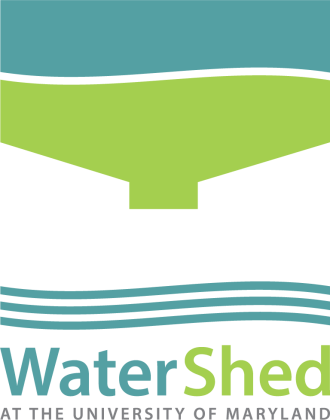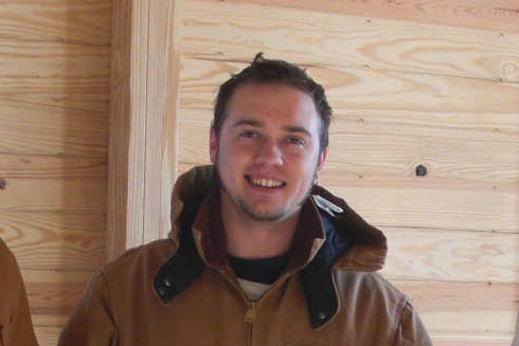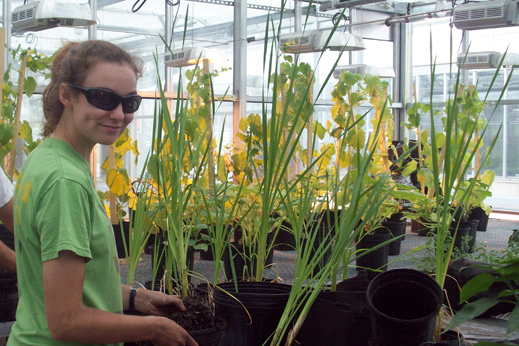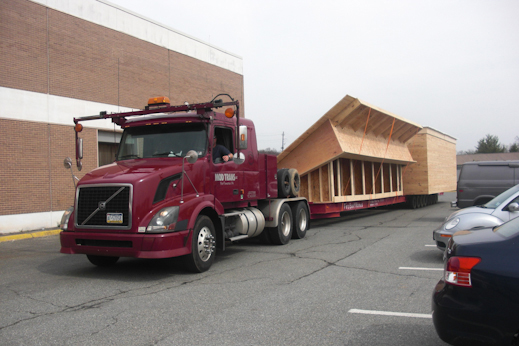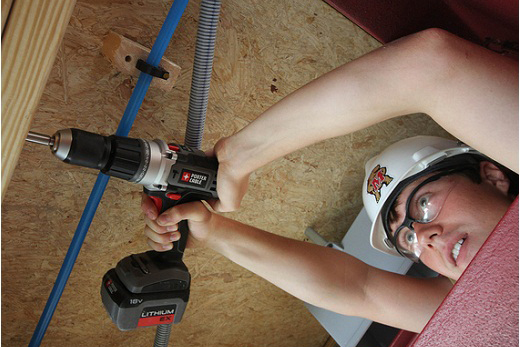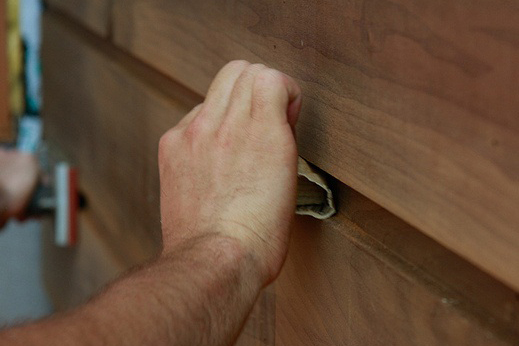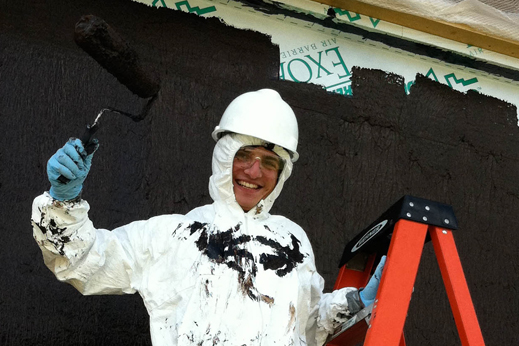
Jeff Rappaport, Team Member, Applying Liquid Barrier to WaterShed
Photo Credit: Aditya Gaddam
Jeff Rappaport is looking at a jam-packed fall semester; entering his junior year at Maryland, he not only faces a full course load, he has the little matter of an international solar competition to contend with. One of a handful of students who was involved in WaterShed from the very beginning, Jeff will be spending whatever free time he can find at Potomac Park in downtown Washington, finishing what he helped start.
One of the things that sparked Jeff’s interest in the Solar Decathlon was his family’s choice to “go solar” a few years ago, adding solar panels to the roof of their home in Olney, Maryland. Pursuing a degree in bioengineering, Jeff is a key member of WaterShed’s engineering team. During the planning stage, he oversaw the energy modeling for WaterShed, determining ideal envelope constructions, shading devices, window placement, and the sizes of the PV and HVAC systems. He is currently devoting most of his time to the liquid desiccant system, which will help cut humidity and cool WaterShed during the warm weather months. Jeff shares his thoughts on his WaterShed experience so far.
What has been your personal WaterShed moment so far?
JR: The arrival of the modules on site was huge. After a year of work, watching the first pieces of the house craned into place on the job site was very fulfilling.
Who have you valued working with/learning from on this project?
JR: Our mentors have been invaluable to the whole team and me personally. Specifically I’ve spent a lot of time working with Dr. (Keith) Herold (Assoc. Professor of Engineering). This project has been a crash course in sustainable construction – I have felt in over my head at times. Our mentors have done a great job keeping us on track and have been an invaluable source of information on seemingly any aspect of the project I’ve needed advice on.
Has working on WaterShed influenced your career path?
JR: It has not necessarily influenced my career path, but with all the construction experience I’ve picked up, I’m really interested in buying a rundown house and rehabbing it into a green home.
When people come to visit WaterShed on the Mall in September, what do you hope they will take away from the experience?
JR: I hope people will see how much more efficiently homes can be built. From simply using more energy-efficient lights and appliances to building a home from scratch with thicker insulation, there are many options out there for how to “green” a home on any budget. And with all the incentives out there, even expensive additions like a PV array can be cost-effective.
What do you always have with you on the job site?
JR: A water bottle and a peanut butter sandwich.
How do you spend your time when you’re not working on WaterShed?
JR: I try to get sleep when I can, otherwise I can be found at Home Depot.
